It is important to carefully consider what techniques will be used to recover from surgery with implanted metal structures in the spinal area. There are six main methods. They must be applied in their entirety and without exceptions.

- Osteochondrosis and its prevention
- How to avoid 'roof disease'
- The 5 best tips for the well-being of people with osteoarthritis
- Pay attention to footwear
- Sleep – walk
- How to choose pillows and mattress
- pillow
- mattress
- Causes and development of hip osteoarthritis
- Symptoms of coxarthrosis
- First symptoms of hip osteoarthritis
- Striking symptoms of hip osteoarthritis
- Functions of an orthosis
- types of orthotics
- Posture correctors: indications and precautions
- Contraindications to use
- The benefits and harms of wearing a corset
- Can posture be corrected in adults?
- Therapeutic body training
- If a metal structure is installed
- Carrying out postoperative rehabilitation
- General principles.
Osteochondrosis and its prevention
People must take care of their own health and have no right to pass it on to others. After all, it is often the case that a person with an inappropriate lifestyle, bad habits, lack of dynamism and overeating already at 20-30 years of age leads itself to a catastrophic condition.
No matter how perfect medicine may be, it cannot cure everyone of all diseases. Man is the creator of his own health, which must be fought for. From an early age it is necessary to lead an active lifestyle, to exercise, to exercise and play sports, to maintain good personal hygiene - in a word, to achieve real harmony of health through reasonable means.
Osteochondrosis and its causes
Osteochondrosis – a disease of the cartilage surfaces of the bones of the musculoskeletal system, especially the spine (but also the hip and knee joints). Osteochondrosis has four stages of development.
In order to understand the disease, it is necessary to know at least the rough outline of the structure of the spine. The vertebrae are connected to each other by ligaments and intervertebral discs. The openings in the vertebrae form a canal that houses the spinal cord; its nucleus, containing sensory nerve fibers, exits between each pair of vertebrae. When the spine is flexed, the discs on the flexed side flatten slightly and their nuclei shift to the other side. Simply put, intervertebral discs are shock absorbers that cushion the pressure on the spine during stress. The mass disease is primarily due to the upright posture of humans, in which the load on the spine and intervertebral discs is much greater than in animals. If a person does not learn to sit, stand or lie properly, the intervertebral disc loses its function (cushioning) and after a while the outer covering of the intervertebral disc tears and hernias form. These narrow the blood vessels (which leads to circulatory problems in the spine) or the spinal roots and, in rare cases, the spinal cord itself. These lesions are accompanied by pain and reflex muscle tension in the back.
How to avoid 'roof disease'
Keen gardeners often complain about worsening of gonarthrosis over the season, which is understandable. In the rush to do all the gardening work, you forget about the joint pain, often squat and spend a lot of time in a motionless state. If you don't want to give up gardening completely, consider these tips:
- Use a chair with high and sturdy armrests that will make it easier for you to get up in the garden shed;
- A small, lightweight stool is useful when working in the garden.
If you plan to spend all summer or longer in your garden shed, make sure it is comfortable and safe. Get rid of worn carpets and doormats with folded edges. Screw in light bulbs everywhere and make sure there are no tripping hazards in hallways and garden paths.
The risk of joint injuries is greater in rural areas: take precautions early on
The 5 best tips for the well-being of people with osteoarthritis
- Place a chair next to your bed so you can lean on it when you get up and avoid straining your joints if you feel stiff in the morning.
- Install handrails on the sides of the tub and place a seat in the tub so you don't have to stand while showering.
- Even if you are not being treated for osteoarthritis but have damaged knees, you should not wear shoes with heels higher than 2 to 3 cm.
- To prevent the progression of osteoarthritis, you should not do without knee pads, wrist orthoses and other orthopedic aids that your orthopedist recommends.
- With coxarthrosis, the leg can become shortened. This problem can be solved with special orthoses that must be worn constantly.
What do cupras look like and in what other cases, apart from different leg lengths, is it recommended to wear cupras:
To treat osteoarthritis, it is not enough to adjust the system. A comprehensive approach is required, often including intra-articular injections of synovial fluid from the prosthesis. 'Noltrex, a synthetic drug with a high molecular weight, penetrates the joint and stops the friction of the cartilage, allowing it to remain there for a long time.
Even if no pain occurs in the next year to year and a half, the joint still needs care. The same type of exercise and injury is still harmful to it. For this reason, many of the tips above are still valid.
Pay attention to footwear
– How important is the right footwear for children?
– Foot deformities caused by incorrect footwear have serious consequences. These include flat feet, a slouched posture, the development of knee and hip problems, and even reduced immunity. Pay attention to your child's gait: wide steps, strong arm waving, swaying are signals for a visit to the podiatrist. The shoes we and our children wear should ensure correct biomechanics of gait. This is probably the most basic requirement for shoes.

Suitable shoes should have a rigid heel cap and a flexible sole, a small heel of up to two centimeters, appropriate to the size of the foot and appropriate. There are a few rules to follow when choosing shoes. First, don't buy oversized shoes. Walking in such shoes may result in an irregular gait and cause discomfort to the child, and the child may fall and injure himself. One centimeter from the edge of the shoe to the big toe is the norm.
Secondly, it is not advisable to put the shoes on until after the second child. After all, the shoe has already adapted to the foot of the previous owner, the heel has worn out, the angle of the back has changed, which can also promote the development of foot deformity.
If a foot deformity is detected, treatment should not be delayed. The alignment of the foot can be corrected using appropriate orthopedic footwear. For prevention, especially during increased physical stress and during puberty, it is advisable to place orthopedic insoles in normal shoes to protect the child's foot from excessive stress and to ensure its correct anatomical alignment. And no matter how attractive ballet flats and models with heels may be for girls, wearing this type of shoes should be limited to two hours a day, and preferably even postponed until the age of 16.
Sleep – walk
– Maybe the design of the resting place is no less important?
– To normalize the muscle tension in the back and relieve the strain on the spine, the child should lie down and rest for one and a half hours after school. A regular horizontal and vertical change of position ensures the correct metabolism of the intervertebral discs.
Sleep is very important for the child, and the younger he is, the more sleep he should get. Elementary school-age children should sleep at least 10 to 11 hours a night, including one and a half hours a day, while older children should sleep at least eight to nine hours.
A special orthopedic mattress with massage balls will help your child have a comfortable sleep. During sleep, the mattress supports the spine in a physiologically correct position, gently stretches the vertebrae and ensures good blood circulation. An orthopedic pillow should be mandatory for every school child. Individually tailored to the age and stature of the child, it helps to form the correct physiological curvature of the spine.

Cool and sufficiently moist air in the room where the child sleeps is another prerequisite for good quality sleep; Therefore, ventilate the room before going to bed and turn on the humidifier if the air is dry. A salt lamp, turned on instead of regular light, purifies and ionizes the air, emitting negatively charged ions that absorb the positive ions produced by household appliances.
– How important is physical activity for posture?
– Physical activity among children has decreased significantly in recent years. They spend more time indoors using modern devices than outside playing outdoor games. Children who exercise less have a higher rate of postural problems and musculoskeletal disorders than children who are active and play sports.
How to choose pillows and mattress
To prevent osteochondrosis and its complications, you should:
The rest of the bedding does not play a special role. However, for a healthy sleep, it is advisable that sheets, pillowcases and duvet covers are natural, breathable and absorbent.
pillow
What you need to know to choose a comfortable pillow:
- Do not buy a soft pillow (your head will sink into it and your muscles will strain to hold it) and a hard pillow (bad for blood circulation on the surface).
- The height of the pillow should be chosen taking into account the height of your shoulders - it is equal to the length from the neck to the end of the shoulder (you can make it 2-3 cm higher), the width - by the width of your shoulders (or slightly wider) .
- A good pillow filling is buckwheat hulls, latex, viscoelastic foam. The pressure of the body creates a depression in the pillow that completely replicates the shape of the body. This distributes the load evenly and relieves strain on the neck muscles.
- How to sleep on my back with osteochondrosis? It is good if the pillow for this purpose is slanted and low, almost flat (to raise the neck and head slightly above the mattress).
In the first few days after purchasing the pillow, you may be tempted to put your hand under your cheek or otherwise raise your head, but this disappears after 3 to 5 days.

mattress
What type of mattress to choose for osteochondrosis?
A bed that is too soft, too hard, or a rough surface is bad for your back.
A medium-firm orthopedic mattress with a memory foam effect is an excellent alternative.


Causes and development of hip osteoarthritis
Hip arthrosis is a group of diseases with different causes, but a similar mechanism of the pathological process, changes in joint tissue and main symptoms. The disease can be primary (the causes of its development are not fully understood) and secondary.
Causes of the development of secondary coxarthrosis:
- exogenous – External influences. This includes heavy physical work and sports, which put additional strain on the legs and cause micro-injuries. This also includes the effects of macro-injuries such as broken bones, sprains and torn ligaments.
- internal causes – Various general diseases, in which coxarthrosis is one of the manifestations. These include chronic inflammatory and autoimmune diseases (rheumatoid, reactive, psoriatic arthritis) as well as metabolic (gout) pathological joint processes. Over time, in addition to inflammation, degenerative-dystrophic processes in the joints of the lower limbs also develop - arthrosis.
- congenital diseases – Dysplasia (joint formation disorders) and osteochondropathy (joint malnutrition with subsequent bone necrosis) can also lead to coxarthrosis, e.g. B. aseptic necrosis of the femoral head (Perthes disease) - the causes of these diseases are not exactly known.
- genetic predisposition – Congenital peculiarities of the hip joint structure and genetically determined connective tissue pathology.
- Age-related physiological processesThe physical processes of aging that are accompanied by hormonal changes, including a decline in female sex hormones (women are more likely to develop the disease than men), obesity and reduced physical activity.
Under the influence of the above factors (often several at the same time), changes gradually occur in the joint cavity at the cellular level: the metabolism in the cells of the cartilage tissue changes, the destructive processes begin to predominate over the synthetic processes. The amount of synovial fluid that nourishes the cartilage tissue decreases. The joint stroma narrows.
Symptoms of coxarthrosis
The disease begins gradually and is often not noticed by the patient. It is important to recognize the first symptoms of the disease, not to ignore them and to see a doctor immediately.
However, if this does not work and serious changes have already occurred in the leg, the doctor can help. It will relieve the pain and stop the progression of the disease.
First symptoms of hip osteoarthritis
The first symptoms of hip osteoarthritis are morning stiffness and pain after walking or standing for long periods of time. The pain is usually localized in the hip joint and radiates to the groin or buttocks. However, sometimes the first symptoms of coxarthrosis are leg pain from the knee down. These disappear quickly when the patient rests.
Unfortunately, when these symptoms appear, patients rarely seek medical attention, but simply ignore them, thereby missing the opportunity to suppress the pathological process from the very beginning, when it is easiest to do so.
Striking symptoms of hip osteoarthritis
The pain syndrome intensifies and spreads to the groin, buttocks, outer and inner thigh to the knee and then down the lower leg to the foot. They limit the range of motion of the limb, especially during internal rotation and outward movement. The pain occurs regardless of physical activity, including at night. They are often associated with changes in the weather. A limp occurs, which may cause the patient to walk with the help of a cane.
The gait gradually changes to a shuffling, 'crouching' gait. The leg is forced to bend slightly at the hip joint, with the lower back tilted slightly forward and the pelvis to the side towards the coxarthrosis.
The patient begins to notice that the affected leg becomes shorter and smaller than the healthy leg. The pronounced symptoms of the disease make it clear that the lesion on the hip is the cause. This is the condition for which the patient most often consults a doctor.
Functions of an orthosis
Orthoses fulfill a whole range of functions:
- They repair, stabilize and relieve the spine and joints,
- to restore the function of the musculoskeletal system and soft tissues after injuries (fractures, sprains, dislocations, subluxations, bruises, etc.)
- Correction of injuries and deformities of the musculoskeletal system (scoliosis, kyphosis, etc.)
- Protection of the joints and spine during sporting activities and heavy physical strain,
- To relieve pain caused by diseases of the spine or joints (osteochondrosis, arthrosis, arthritis, spondylosis, etc.).
The term 'orthoses' is often incorrectly used exclusively for rigid joint orthoses (complex knee and ankle orthoses, rigid hip and wrist orthoses, round frames, etc.). This is just as wrong as using the term 'furniture' only for tables and chairs, e.g. B. Forget cupboards and drawers.
types of orthotics
All orthoses can be divided into three main groups:
- Spinal orthoses (spine splints, corsets, reclinators, prenatal and postnatal bandages)
- Orthoses for the joints of the upper limbs (shoulder orthoses, elbow orthoses, wrist orthoses and finger orthoses).
- Orthoses for the joints of the lower limbs (hip orthoses, knee pads, ankle braces, orthoses and certain types of orthopedic footwear).
In terms of construction When manufacturing orthoses, a distinction is made between prefabricated and custom-made orthoses. Prefabricated orthoses are manufactured in a wide range of sizes. The doctor prescribes a specific type of orthosis, and the patient can choose from a number of models.
Custom-made orthoses are made personally for the patient in the orthopedic laboratory, taking into account the patient's anatomy and the type of pathology. The most common type of custom-made orthoses are those made after taking impressions of the affected area of the musculoskeletal system.
Posture correctors: indications and precautions
Correct posture shows that a person is healthy and confident. However, keeping a straight back is not that easy. Many people, especially children, are constantly told to keep their backs straight, but many find this very difficult, and their own efforts are often not enough to solve the problem. An orthopedic corset is an effective way to achieve ideal posture and train muscles. This product is prescribed, among other things, for the prevention of elderly people and people whose spine is subjected to constant physical stress.
However, some models of posture correction are contraindicated and, in addition to their benefits, can also be harmful to the individual. Therefore, it is important to find out which medical device is suitable for a particular situation before purchasing a product.
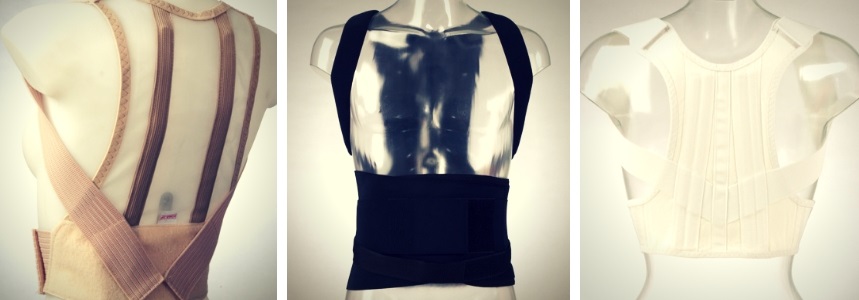
Contraindications to use
The medical product is not suitable for all people, so it is necessary to carefully read the contraindications. This includes:
- Dermatological diseases, wounds and rashes in areas with which the posture belt may come into contact;
- pulmonary and cardiovascular diseases;
- Allergy to the material of the orthosis or recliner;
- pregnant women;
- Children (certain types of products are not recommended for children under 4 years old);
- Medical ban.
Although orthopedic products can be purchased without a prescription, the patient should always consult an orthopedist. Only then can a slip bandage be purchased.
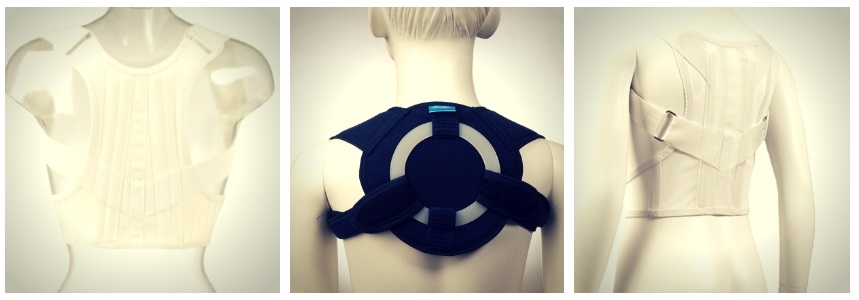
The benefits and harms of wearing a corset
Wearing a posture corrector can have both advantages and disadvantages. The benefits of wearing a spinal brace are as follows:
Can posture be corrected in adults?
Bone tissue is most sensitive to external influences in childhood. In children aged 2 to 3 years, the flexibility of the muscles and ligaments is greatest, so problems and illnesses at this age can be corrected very quickly. If parents do not pay attention to correct posture at a young age, a curvature of the spine, known as scoliosis, develops. In severe forms of scoliosis, some vertebrae may rotate on their axis, affecting the function of the chest and pelvis. Flat feet in young children are also usually the result of a chronic misalignment of the vertebrae in relation to the axis of the spine, which is why the snagging should be treated as early as possible.
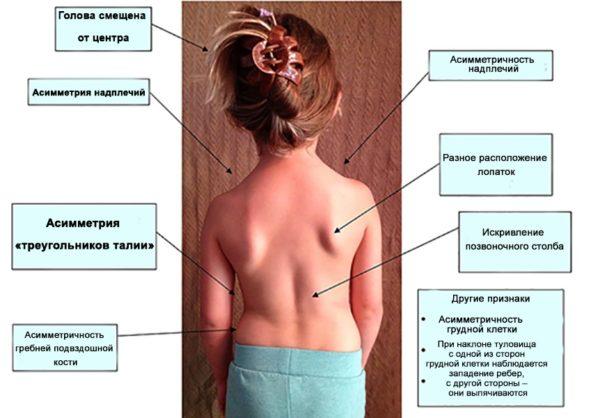
In most cases, posture problems in adults are the result of behavioral habits. These can include:
- Reading in bed while lying down;
- sitting at the computer for a long time, especially if not a professional computer chair is used, but an ordinary chair or an upholstered stool;
- Working at a desk that is not the right size for your height and stature;
- Incorrect posture when sitting (crossing your legs, putting your legs under you, crossing your legs in front of your body, etc.).
- Watch TV while lying in bed.
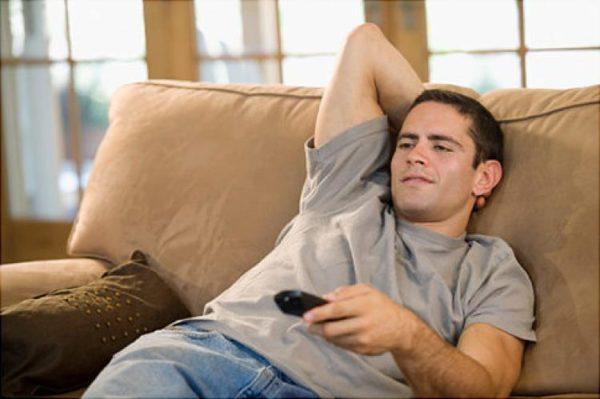
A diet deficient in the minerals (calcium, phosphorus, sodium, magnesium, iron) necessary for musculoskeletal health can affect posture. Spinal curvature can occur with hypodynamia, a circulatory disorder caused by a sedentary lifestyle. The functioning of the nervous system also plays an important role in the formation of posture: if a person is constantly stressed, suffers from depressive disorders, psychoses or neuroses, the back unconsciously assumes a bent position.
Therapeutic body training
This is the most accessible and simple way to correct posture at home, but it is impossible to correct serious disorders through exercise alone. Special complexes help strengthen the back muscles, restore blood circulation and improve the flexibility of the ligaments. Do them regularly and gradually increase the number of exercises to the desired level.
Heron (light version)
Stand with your feet together. Extend your arms forward and bring them behind your head, bend back and pull one leg back. Return to the starting position and repeat the exercise with the other leg. Perform the exercise 10 times on each leg.
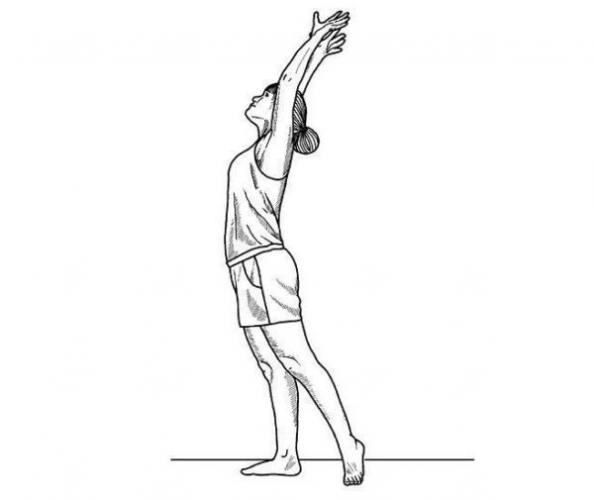
Stand in front of a wall (or other solid surface) at shoulder height. Support yourself with your arms on the wall and bend them so that your elbows are perpendicular to the floor. Perform 20-30 wall push-ups. This exercise not only corrects your posture but also strengthens your chest muscles and helps you get your chest back in shape.

Bend your knees and support yourself with your arms. Arch your back while pushing your head down, then lift your head and arch your back down as far as possible (an exercise called a 'cat'). Repeat this 10-15 times.
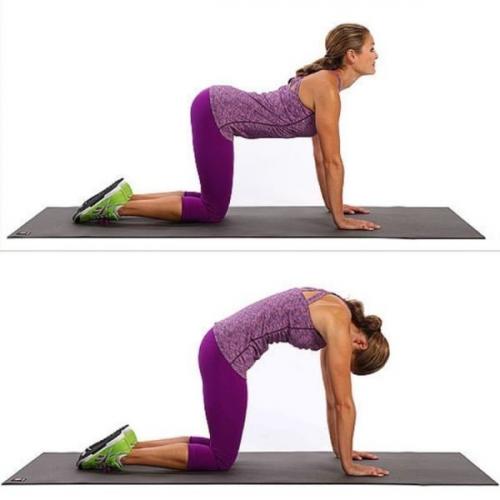
Stand with your feet shoulder-width apart, your hands bent at the elbows and in front of you. Rotate your body 20 times to each side.
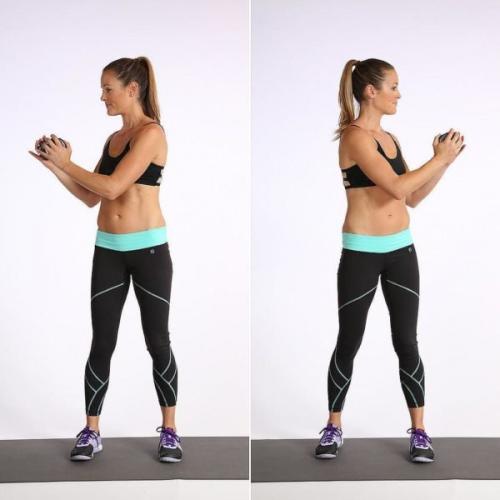
If a metal structure is installed
Of course, this does not always help, and this operation is not used in all problematic cases. If the spine is severely damaged, metal is placed on the vertebral bones during surgery.

The spine can become damaged for the following reasons.
- Fall of a person from a height.
- A road accident.
- Collapse of an object (roof, avalanche or other) and strong impact on the spine.
- Diseases of the spine leading to degeneration and dystrophy.

A person who has undergone steel structure spinal surgery should be prepared for the fact that he is contraindicated in any sports.
The lumbar spine and neck are the most commonly injured areas. With an injury to the lumbar spine, a person may survive but remain completely immobile; If the cervical spine is injured, death is the most likely outcome.

If the principles of postoperative rehabilitation are followed, serious complications can be avoided and the ability to work can be restored in a timely manner.
Carrying out postoperative rehabilitation
After any injury, the human body must recover. This can happen quickly or take a very long time. In any case, it is necessary to first follow the general principles of rehabilitation, which also apply to patients who have undergone an operation in which structural implants were inserted into one of the vertebrae.

If you want to learn more about the stages of recovery and rehabilitation after a lumbar hernia, you can read an article on this topic on our portal.
General principles.
If the patient scrupulously follows the above rehabilitation instructions, this will contribute not only to a speedy recovery, but also to the avoidance of serious complications that may arise in the postoperative period.
- If you have had surgery in the lumbar region with the use of metal structures, you are not allowed to sit for several months (the number will be determined by your surgeon).

Spinal reconstructive surgery is a complex surgical procedure.

- Buy an orthopedic mattress.
- orthopedic.
- Which doctor treats the hip joints.
- Orthopedic footwear under IPR.
- This is what orthopedic footwear looks like.
- orthopedic shop.
- Orthopedic Center Perseus.
- Perseusz Orthopedic Shop on Szczelinowa Street.
